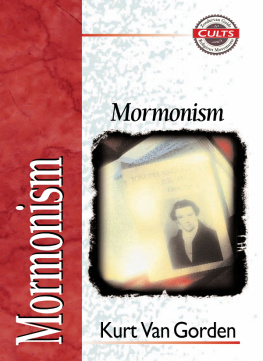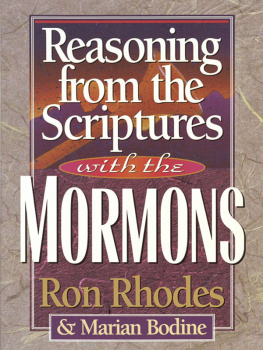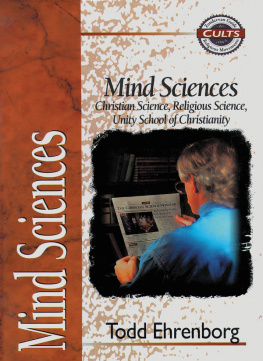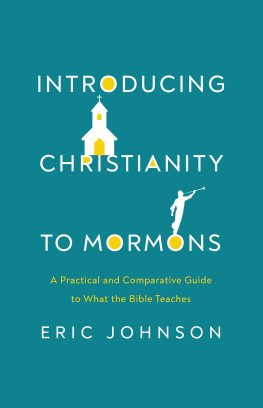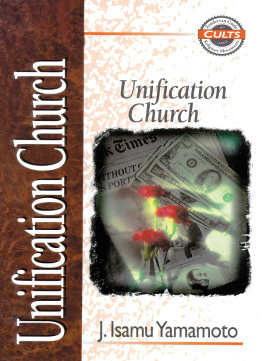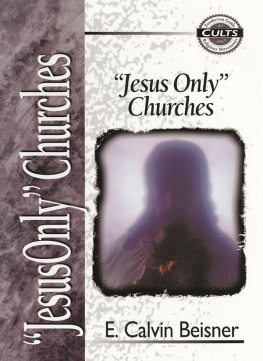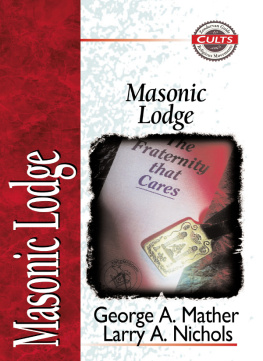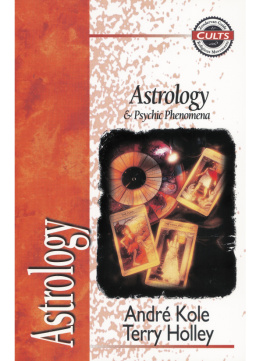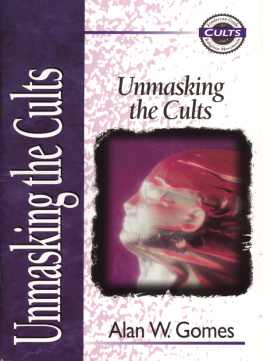Zondervan
Guide to Cults &
Religious Movements
First Series
Unmasking the Cultsby Alan W. Gomes
Jehovahs Witnessesby Robert M. Bowman, Jr.
Masonic Lodgeby George A. Mather and Larry A. Nichols
Mormonismby Kurt Van Gorden
New Age Movementby Ron Rhodes
Satanismby Bob and Gretchen Passantino
Unification Churchby J. Isamu Yamamoto
Mind Sciencesby Todd Ehrenborg
Second Series
Jesus Only Churchesby E. Calvin Beisner
Astrology and Psychic Phenomenaby Andr Kole and Terry Holley
Goddess Worship, Witchcraft and Other Neo-Pagan Movementsby Craig Hawkins
TM, Hare Krishna and Other Hindu-based Movementsby Kurt Van Gorden
Dianetics and Scientologyby Kurt Van Gorden
Unitarian Universalismby Alan W. Gomes
UFO Cults and Urantiaby Kenneth Samples and Kevin Lewis
Buddhism, Taoism and Other Far Eastern Movementsby J. Isamu Yamamoto
ZONDERVAN
Mormonism
Copyright 1995 by Kurt Van Gorden
Requests for information should be addressed to:
Zondervan, 3900 Sparks Dr. SE, Grand Rapids, Michigan 49546
ePub Edition July 2016: ISBN 978-0-3105-3502-7
Library of Congress Cataloging-in-Publication Data
Van Gorden, Kurt.
Mormonism / Kurt Van Gorden, author
p. cm. (Zondervan guide to cults and religious movements)
Includes bibliographical references.
ISBN 978-0-310-70401-0 (softcover)
1. Mormon ChurchControversial literature. 2. Church of Jesus Christ of Latter-day SaintsControversial literature I. Title. II. Series: Zondervan guide to cults and religious movements.
BX8645.V35 1995
289.3 dc20
94-26654
CIP
All Scripture quotations, unless otherwise indicated, are taken from The Holy Bible, New International Version, NIV. Copyright 1973, 1978, 1984 by Biblica, Inc. Used by permission of Zondervan. All rights reserved worldwide. www.Zondervan.com. The NIV and New International Version are trademarks registered in the United States Patent and Trademark Office by Biblica, Inc.
Any Internet addresses (websites, blogs, etc.) and telephone numbers in this book are offered as a resource. They are not intended in any way to be or imply an endorsement by Zondervan, nor does Zondervan vouch for the content of these sites and numbers for the life of this book.
All rights reserved. No part of this publication may be reproduced, stored in a retrieval system, or transmitted in any form or by any means electronic, mechanical, photocopy, recording, or any other except for brief quotations in printed reviews, without the prior permission of the publisher.
Edited by Patti Picardi
Interior design by Art Jacobs
To Dr. Walter R. Martin (19281989)
A personal friend, teacher, and mentor who wrote the first Zondervan series
on cults (1950s). He taught me to never give up and to contend
earnestly for the faith once for all delivered to the saints (Jude 3).
The Zondervan Guide to Cults and Religious Movements comprises sixteen volumes, treating many of the most important groups and belief systems confronting the Christian church today. This series distills the most important facts about each and presents a well-reasoned, cogent Christian response. The authors in this series are highly qualified, well-respected professional Christian apologists with considerable expertise on their topics.
We have designed the structure and layout to help you find the information you need as quickly as possible. All the volumes are written in outline form, which allows us to pack substantial content into a short book. With some exceptions, each book contains, first, an introduction to the cult, movement, or belief system. The introduction gives a brief history of the group, its organizational structure, and vital statistics such as membership. Second, the theology section is arranged by doctrinal topic, such as God, Christ, sin, and salvation. The movements position is set forth objectively, primarily from its own official writings. The groups teachings are then refuted point by point, followed by an affirmative presentation of what the Bible says about the doctrine. The third section is a discussion of witnessing tips. While each witnessing encounter must be handled individually and sensitively, this section provides some helpful general guidelines, including both dos and donts. The fourth section contains annotated bibliographies, listing works by the groups themselves and books written by Christians in response. Fifth, each book has a parallel comparison chart, with direct quotations from the cultic literature in the left column and the biblical refutation on the right. Some of the books conclude with a glossary.
One potential problem with a detailed outline is that it is easy to lose ones place in the overall structure. Therefore, we have provided graphical signposts at the top of the odd numbered pages. Functioning like a you are here map in a shopping mall, these graphics show your place in the outline, including the sections that come before and after your current position. (Those familiar with modern computer software will note immediately the resemblance to a "drop-down menu bar, where the second-level choices vary depending on the currently selected main menu item.) In the theology section we have also used "icons in the margins to make clear at a glance whether the material is being presented from the cultic or Christian viewpoint. For example, in the Mormonism volume the sections presenting the Mormon position are indicated with a picture resembling the angel Moroni in the margin; the biblical view is shown by a drawing of the Bible.
We hope you will find these books useful as you seek to give an answer to everyone who asks you to give the reason for the hope that you have (1 Peter 3:15).
Alan W. Gomes, Ph.D.
Series Editor
Part I:
Introduction
I. Historical Background
A. Joseph Smith, Jr. (180544): Founder
1. Smiths Family Background (180520)
a. Smith was born to Joseph and Lucy Smith on December 23, 1805, in Sharon, Vermont.
b. Smith was the fourth child of nine who survived.
c. In 1817, the Smith family settled on a farm in Palmyra, New York.
d. Smiths parents were inactive Protestants.
(1) Joseph and Lucy Smith blended superstitious folklore
(2) His mother, two brothers, and a sister later joined the Presbyterian Church in Palmyra, New York.
2. Early Religious Visions and Experiences (182027)
a. Vision of the Father and Jesus Christ (1820).
(1) In the Spring of 1820, when Smith was fourteen years old, he claimed that a revival broke out in the Presbyterian, Baptist, and Methodist churches of Palmyra.
(2) Smith was not willing to join in the excitement, but questioned which, if any, church was true.

